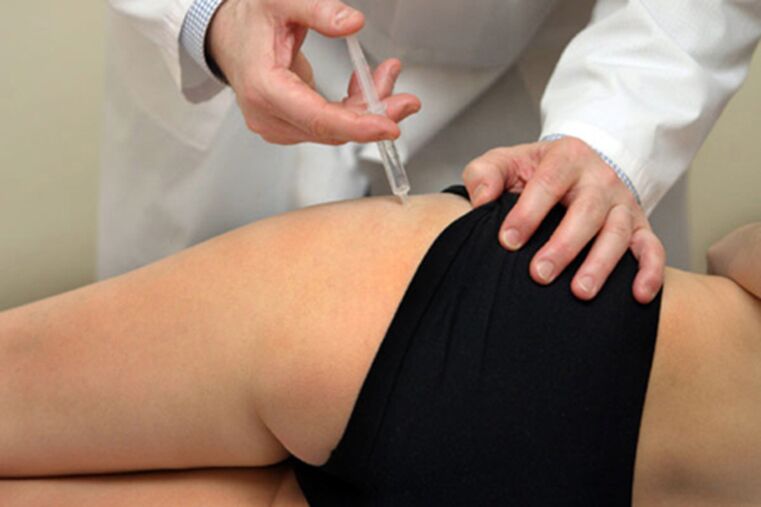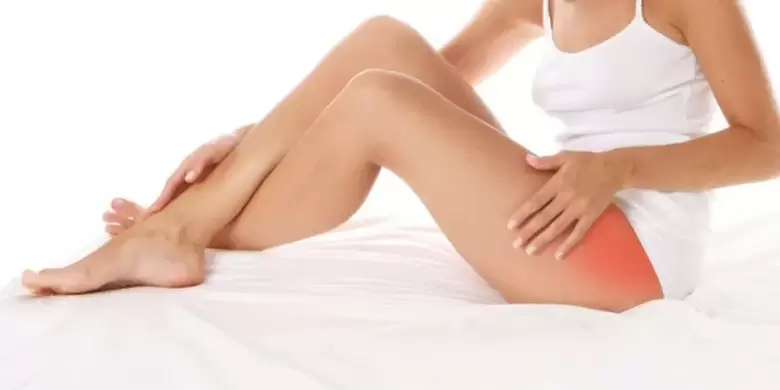
Hip arthropathy is a change in the hip joint that is common in disease and is based on a degenerative dystrophic process. The hip joint is formed by connecting the femoral head to the bones of the pelvis.
There are primary and secondary forms of this disease. The primary etiology is not fully understood, but secondary can be induced by a variety of factors. These are trauma, inflammation, Peters pathology, femoral head necrosis, hip dislocation and dysplastic processes.
Hip Arthropathy of the hip causes changes in the composition and properties of intra-articular fluid. Its viscosity increases, causing damage to the articular surface. Cartilage thins and the distance between the bones that form the joint decreases. The pressure on their surfaces increases, triggering the deformation process.
Periodically, this chronic disease enters an exacerbation phase. During this period, an intense pain syndrome develops. Aside from exacerbations, therapeutic exercise is a good preventative measure.
Etiology
There are many reasons for hip joint disease to occur. These include:
- Violation of the process of blood supply to the joint - decreased venous outflow and arterial inflow. Due to the violation of nutrition, the accumulation of metabolites leads to the destruction of cartilage tissue;
- This mechanical effect increases the load on the joint;
- Violation of biochemical homeostasis, hormonal imbalance;
- trauma;
- Infectious inflammation;
- a state of necrosis of the femoral head;
- Dysplasia of cartilage and bone tissue;
- a sedentary lifestyle;
- genetic susceptibility;
- Congenital hip dislocation.
symptom
When contacting patients, doctors conduct investigations and tests to determine the severity of the pathology.
The disease has the following symptoms: pain in the joints themselves, as well as pain in the thighs, groin, and knees. Impaired ability to move the affected limb. The "shortening" of the legs, and the process of atrophy of the thigh muscles.

The nature of pain and its intensity and localization depend on the stage. The pain increases as the disease progresses. Pain occurs in the knee due to the muscle wasting that occurs. For this reason, sometimes the diagnosis is wrong - they suggest knee arthropathy. It is necessary to contact an experienced specialist who will be able to make a differential diagnosis and make the necessary appointments. Only a doctor can identify a disease and find out what kind of treatment a patient needs.
degree
Distinguish between the following degrees of disease.
- first level. This degree is characterized by a pain syndrome caused by stress. Localization of pain - hip, less commonly - thigh and knee. On an X-ray, small growths of bone tissue can be seen.
- second degree. In this degree of disease, the pain increases and increases in intensity. The positioning extends to the thigh and groin area. Pain can also occur at rest. Movement is limited and X-rays show volume growth of bone tissue. Cysts sometimes form where the pressure is increased.
- Three degrees. This degree is characterized by persistent pain. Walking is difficult. Severe atrophy of the thigh, hip and calf muscles. Limbs are significantly shortened. X-rays show extensive growth of bone tissue.
diagnosis
The main diagnostic method is X-ray examination. With its help, doctors can determine the cause and stage of the disease and determine whether surgery is needed. For example, with dysplasia, doctors will notice a bevel and thickening of the acetabulum. An x-ray of hip disease caused by an injury allows you to see the shape of the bone in the joint after it has been repaired. Hip arthropathy that develops due to necrosis of the femoral head also has characteristic radiographs.
treat
The question of how to treat hip osteoarthritis can only be answered by a doctor. The nature of the treatment depends on the extent of the disease and the intensity of the pain. Self-medicating at home can be dangerous. For third-degree hip arthropathy, the disease can only be cured with the help of arthroplasty, in which doctors replace the joint by installing an artificial prosthesis. Usually, hip joint disease due to necrosis of the femoral head requires surgery.
In the treatment of primary and secondary pathology, surgery is not required. Use medical and physical therapy prescribed by the attending physician, as well as therapeutic exercises that can be used at home.

medical treatement
Medication includes medicines such as pills, injections, and ointments.
- Non-steroidal anti-inflammatory drugs. They are able to reduce pain and stop inflammation and swelling, the downside is the reduced ability of cartilage to regenerate. If it doesn't work, change the medication. Some medications come in the form of injections—injectables—that are most effective.
- Vasodilators. The move is designed to relax the muscle tissue and widen the lumen of the blood vessel. Improve blood supply.
- Muscle relaxants (muscle relaxants). They relieve muscle spasms and improve blood circulation.
- chondroprotective drugs. Helps in the repair of cartilage tissue. Regular use allows you to completely stop the progression of the disease.
- Hormone therapy. High-quality injections containing these substances can help reduce inflammation. It is necessary to take a week off between injections.
- Topical preparations - ointment, compresses. These drugs can improve blood circulation and help get rid of pain caused by muscle spasms.

With the help of a complex of the listed drugs, the disease can be cured.
physiotherapy
It includes many procedures namely electrotherapy, induction hyperthermia, magnetic therapy and ultrasound therapy. UHF therapy, laser therapy, light therapy and air ion therapy.
All of these techniques work to improve blood supply to the joints and help relieve muscle spasms. These procedures are performed by doctors who specialize in physical therapy.
massage
Massage is an effective treatment for this condition: it improves blood circulation, strengthens muscles, relieves cramping pain, swelling. With its help, the distance between the articular surfaces is increased. Massage can be done at home, but it must be done under the advice of an expert.

combined traction
Manufactured manually or using a traction device. It results in a decrease in the load on the joint and an increase in the distance between the articular surfaces. This procedure is only performed by doctors with a high level of qualifications. It cannot be done at home.
diet
Lose weight if necessary. This helps reduce stress on the joints.
gymnastics
It has a good therapeutic effect on hip joint disease. Doctors will choose specific exercises to strengthen the muscles so that they do not increase the load on the joint area. Appropriate therapeutic exercise can provide relief and build muscle. It can be done at home. Also, swimming is very useful.
Alternative therapies are also used to treat hip disease, but all of them must be approved by the attending physician.
It should be noted that the treatment of hip arthropathy should be complex. Physiotherapy and massage cannot be ignored. You will also need to perform the exercises recommended by Therapeutic Exercises. Do not self-medicate, so as not to damage your health. Any medication should only be prescribed by a doctor. Proper treatment will help eliminate the need for surgery.















































